John Ogilby
33 x 45 cm
Strip map showing the route from London to Winchester, the beginning stretch of the much larger route from London to Lands End. This map is number 25 of the 100 maps found in the atlas ‘Britannia’, the first road atlas of England and Wales.
This map by John Ogilby comes from the third iteration of the ‘Britannia’ atlas, following in the footsteps of William Camden in 1586 and Richard Blome in 1673. Of all three versions of ‘Britannia’, John Ogilby’s is the best known largely because it was the first, and only one, to use measured distances. Miles are marked and numbered on each map, with each mile further being divided into furlongs. Ogilby measured the roads he was mapping using a surveyor’s wheel, which Ogilby called his “way-wiser”. Using the surveyor’s wheel, the roads were plotted at one inch to the statute mile (a scale of 1:63,360). Ogilby is noted in cartographical history for this innovation, as it was the first time that any road in Great Britain was plotted using an accurate, standardized form of measurement. Before this, each county in Great Britain used its own distance of miles. As such, Ogilby standardized the length of the mile so that the scale of his strip maps remained clear and cohesive from one county to the next. This innovation is particularly noteworthy as the mile standardized by Ogilby is the same mile used in Great Britain to this day.
The cost of the surveys and resulting mapping required for Ogilby’s ‘Britannia’ is not entirely known. However, in a prospectus, Ogilby quotes a preliminary estimate made by the "Lords Referees" – advisors to the Privy Council – as £14,000 (equivalent to about £2.9 million today). Ogilby worked hard to raise this considerable sum by holding lotteries, and with the help of Robert Hooke, who made multiple petitions to the Crown, the Court of Common Council and Court of Aldermen of the Corporation of London and to noble families. Writing in 1925, geographer Sir Herbert Fordham said: “twice only ... has there been such [measurement of roads]: that of John Ogilby, in 1671-5, and that of John Cary, quite at the end of the following century. In neither case, singularly enough, did the Government take any steps for the publication of the results of the survey, everything being left, in this respect, to private and commercial enterprise.”
This strip map is split into five separate columns, each one following on from the last. Each column features a compass next to the road, pointing north. This inclusion is important as the style of the strip map required the roads displayed to be largely parallel to each other; however, in reality, each section of the road often bent and turned as it continued onwards. The map features the names of locations at points along the road, as well as depictions of certain natural landmarks. The city of London, found at the start of the road in the lower-left corner, is particularly illustrated and depicts a collection of housing and streets. The first strip covers the road from London to Hampton Court, through Kensington and Hammersmith. The second strip extends from Hounslow to Windsor Great Park. The third covers Windsor to Blackwater, a small village on the Hampshire border. The fourth strip continues to Hook, east of Basingstoke. The fifth strip passes through Basingstoke to Oakley, and the final strip continues through Whitchurch to Winchester.
Coloured. [MIDDX502]


